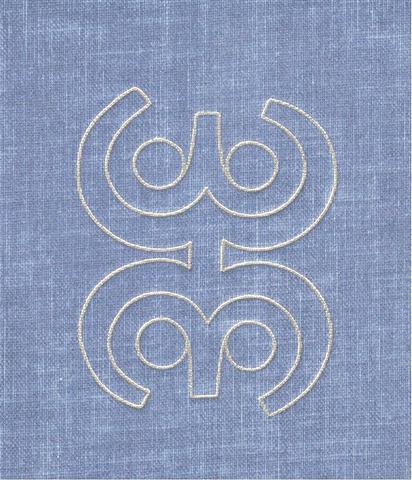Next page:
|
7.
The central pillar connecting the two halves of time is the axis of the
earth, around which earth is spinning and making light and darkness
change places every 24 hours. June 24 and December 24 are
appropriate dates for the location of the central pillar.
So when our side of the earth is
light, i.e. the sun is looking at us, he cannot observe the other
side, it is in the dark. Exactly as if we were looking at the stone
'globe' which has been rolled out on a flat surface by Heyerdahl:

Our
eyes are like the sun:
"The eye is the symbolic site of
subjection. Valeri observes that: 'The two sentiments that permit
the transcendence of the self are, according to Hawaiians, desire
and respect. One and the other are called kau ka maka,
literally, 'to set one's eyes on' ...
'To see' (ike) in Hawaiian
(as in French or English) is 'to understand', but it is also 'to
know sexually'.
Witness to the order, the world of forms generated by
the chief, the eye, is the sacrifice of those who violate that
order. The left eye of the slain tabu-transgressors is swallowed by
Kahoali'i, ceremonial double of the king and living god of
his sacrificial rites.
Like the sun, chiefs of the highest tabus -
those who are called 'gods', 'fire', 'heat', and 'raging blazes' -
cannot be gazed directly upon without injury. The lowly commoner
prostrates before them face to the ground, the position assumed by
victims on the platforms of human sacrifice. Such a one is called
makawela, 'burnt eyes'."
(Islands of History) |
The right eye surely is the 'morning
star' and the left the 'evening star'. If both eyes were representing the sun, then
the central pillar - according to G - seems to locate one hole for the pillar at
Gb1-3:
 |
 |
 |
 |
 |
|
Ga8-16 |
Ga8-17 |
Ga8-18 |
Ga8-19 |
Ga8-20 |
 |
 |
 |
 |
 |
|
Ga8-21 |
Ga8-22 |
Ga8-23 |
Ga8-24 |
Ga8-25 |
 |
 |
 |
 |
 |
|
Ga8-26 |
Gb1-1 |
Gb1-2 |
Gb1-3 |
Gb1-4 |
It is a Rogo sign, it should
represent some sort of 'solstice'.
But summer solstice, when counted
from winter solstice at Gb6-26,
comes much earlier. Not even if we
begin counting from Gb8-30 does
Gb1-3 arrive in time for summer
solstice, it has ordinal number 233.
233 + 182 = 415, and
if Gb1-3 in some unknown way really
is to be regarded as standing at
summer solstice, then winter
solstice would be around glyph
number 415 (counted from Gb8-30).
415 - 230 = 185 will
be the number if we count from Gb1-1
and in that case glyph line Gb6 ends
with number 181:
 |
 |
 |
 |
 |
 |
 |
 |
|
Gb6-17 |
Gb6-18 |
Gb6-19 |
Gb6-20 |
Gb6-21 |
Gb6-22 |
Gb6-23 |
Gb6-24 |
 |
 |
 |
 |
 |
 |
 |
 |
|
Gb6-25 |
Gb6-26 |
Gb6-27 |
Gb6-28 (181) |
Gb7-1 |
Gb7-2 |
Gb7-3 |
Gb7-4 |
|
408 |
409 |
410 |
181 + 230 = 411 |
412 |
413 = 14 * 29.5 |
414 |
415 |
|
472 |
473 |
474 |
64 + 411 = 475 |
476 |
477 |
478 |
479 |
Indeed hau tea at Gb7-2 looks
like winter solstice, because it
stands at position 14 * 29.5 counted
from Gb8-30. Counted from Rogo
in Gb6-26 a new year has already
arrived, and it is day 5 of the new
year.
But then we can draw the conclusion
that 4 days before Gb1-3 we have
summer solstice counted by the sun:
 |
 |
 |
 |
 |
|
Ga8-21 |
Ga8-22 |
Ga8-23 |
Ga8-24 |
Ga8-25 |
 |
 |
 |
 |
 |
|
Ga8-26 |
Gb1-1 |
Gb1-2 |
Gb1-3 |
Gb1-4 |
Ga8-24 has empty hands. This could
be the intended reading:
 |
 |
178 |
 |
 |
|
Ga8-24 |
Ga8-25 (229) |
Gb6-25 |
Gb6-26 |
|
day zero |
180 |
day 1 |
 |
 |
178 |
 |
 |
 |
|
Gb1-2 |
Gb1-3 (233) |
Gb7-1 |
Gb7-2 |
Gb7-3 |
|
180 |
zero days |
day 1 |
Moon, according to this idea, should
have 2 zero days, and also 2 days at
the beginning.
Then we will realize that also
Gb7-3--4 will be 2 days, the
beginning of next cycle.
Maybe also sun has 2 days at the
beginning and two at winter
solstice?
The staff at right in Ga8-25 could
represent the central pillar and the
hole in Gb1-3 where it should be
put.


















